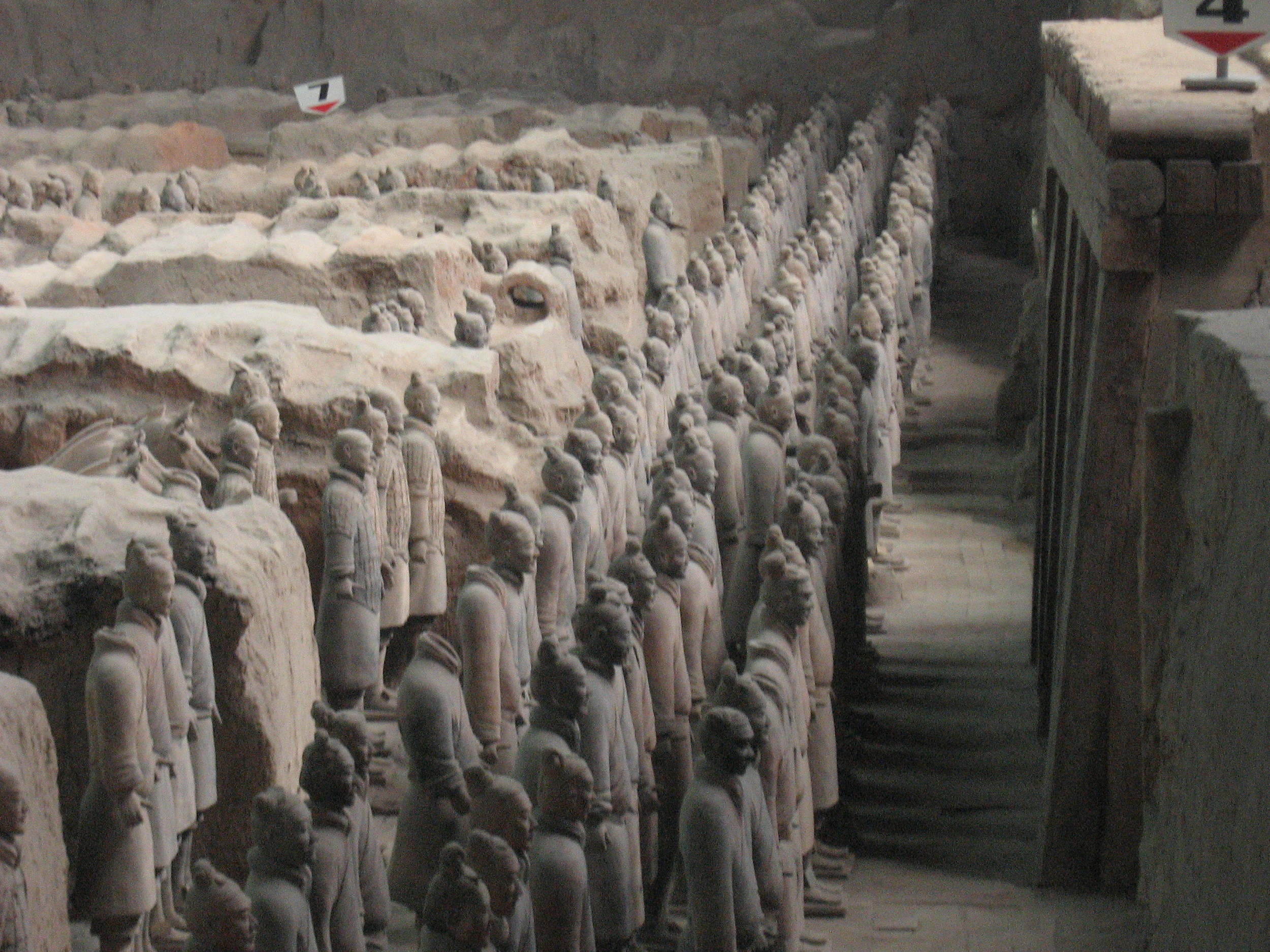Founding an Empire
The foundations of Chinese civilization emerged during a time when there were several competing states in the region. The unification of China took place under the Qin dynasty (221-206 BC). The "First Emperor," as he later became known, conquered all his rivals, expanded his territory, and established a centralized, bureaucratic government. As the unifier of China, the First Emperor standardized weights and measures, currency, and the written script, and established a strict rule of law. The Qin established China as a great agricultural empire with dominance in the region. Qin is pronounced "Chin," and this is where China gets its name.
achievements
The First Emperor led a number of massive building projects, including a huge palace, roads, canals, and fortifications, using prisoners or drafted laborers. Hundreds of thousands of people were drafted to help build the Great Wall. The Great Wall is an enormous defensive border against invading nomadic peoples from the north. With additions through the centuries, the wall reached a total length of more than 13,170 miles. Under the Ming Dynasty (1368–1644), the Great Wall became the largest military structure in the world. It is now considered a UNESCO World Heritage Site and one of the Seven Wonders of the World.
Tomb of the first emperor
The tomb of the First Emperor of Qin, located near Xi'an, the site of the old Qin capital, is famous for its terra cotta warriors. Buried in pits about half a mile from the emperor's tomb are thousands of life-size figures of soldiers and horses, equipped with real chariots and bronze weapons, lined up to protect the emperor in the afterlife. The tomb is now a UNESCO World Heritage Site. From the tomb, we can learn about the military organization of the Qin, various forms of technology (pottery, metallurgy, chariot making), artistic achievement, as well as ideas about the afterlife.
legacy
The First Emperor had many achievements in unifying China, and completing grand building and irrigation works. By consolidating the territory, populace, economy and resources of the fragmented early states, and establishing a centralized bureaucratic government with uniform rules and laws, the Qin enabled the development of a great empire and civilization on par with Rome. However, the First Emperor of Qin was also known throughout Chinese history as a tyrannical figure, considered cruel and harsh. He did not match the Confucian ideal of a good ruler. Many poems and legends in Chinese history lament the people who died in constructing the Great Wall.

